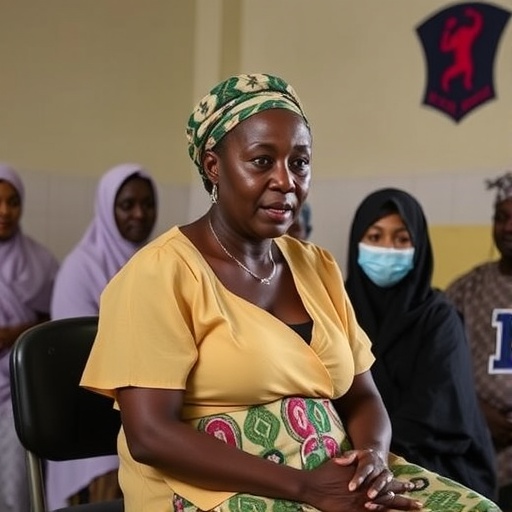End it now: why violence against women is everyone’s problem – signsmag.com

A Report on Gender-Based Violence as an Obstacle to Sustainable Development
Gender-based violence (GBV), particularly intimate partner and domestic violence (DV), presents a significant and pervasive challenge to achieving the United Nations Sustainable Development Goals (SDGs). This violence undermines progress on several fronts, most notably SDG 5 (Gender Equality), SDG 16 (Peace, Justice and Strong Institutions), and SDG 3 (Good Health and Well-being). It is a global crisis that infiltrates every level of society, irrespective of culture or class.
The Scale of the Crisis: A Direct Contravention of SDG 5 and SDG 16
The prevalence of lethal violence against women is a stark indicator of the failure to meet SDG Target 5.2, which calls for the elimination of all forms of violence against women and girls. The issue is not an abstract threat but a tangible danger to life, undermining the principles of peace and justice central to SDG 16.
National and Global Statistics
- According to a July 2024 report from Monash University, a woman in Australia is killed by a current or former partner every nine days.
- In 2023, 58 women in Australia were killed as a result of intimate partner violence.
- Data from New Zealand’s Homicide Report indicates that half of all female homicide victims aged 18 or older are killed by a partner or ex-partner.
- The UN Office on Drugs and Crime estimates that, globally, a woman is killed by a partner or family member every 11 minutes.
Professor Kate Fitz-Gibbon of Monash University has stated, “Domestic, family and sexual violence is the number-one threat to the lives of women and children in Australia,” highlighting a critical gap in national security priorities when compared to external threats.
Understanding the Multifaceted Nature of Domestic Violence
Effectively addressing GBV requires a comprehensive understanding that extends beyond physical harm. Domestic violence encompasses a range of abusive behaviours that systematically erode a victim’s autonomy, safety, and well-being, directly impacting SDG 3. Survivors often live in a constant state of fear, a condition antithetical to a healthy and peaceful life.
Forms of Abuse
- Physical and sexual abuse
- Spiritual manipulation
- Financial abuse
- Stalking and coercive control
- Technology-facilitated abuse, including digital control, verbal abuse, and threats of blackmail
Identifying the Drivers of Violence: A Challenge to Societal Structures and SDG 10
The root causes of GBV are deeply embedded in cultural and structural inequalities, posing a direct challenge to SDG 10 (Reduced Inequalities) and SDG 5. Addressing these drivers is essential for creating lasting change.
Cultural and Structural Factors
Former Victoria victims of crime commissioner, Fiona McCormack, identifies four key community-level drivers of violence:
- Community attitudes that condone or tolerate violence.
- The prevalence of rigid gender stereotypes.
- Men’s control of decision-making and limitations placed on women’s independence.
- Hypermasculine attitudes that foster disrespect towards women.
Contributing Factors and Addictions
While substance abuse is a known correlate, gambling addiction is emerging as a significant factor. Associate Professor Charles Livingstone from Monash University notes a clear link between gambling and GBV, where the associated financial stress and personal grief can manifest as violence. This is particularly concerning for Australia, which has the highest per capita gambling losses in the world.
The Influence of Media and Pornography
The normalization of violent and coercive sexual content in media is increasingly recognized as a driver of violence. Australia’s National Plan to End Violence Against Women and Children (2022–2023) acknowledges pornography as a contributing factor. Social commentator Melinda Tankard Reist has highlighted that the romanticization of female submission and unequal power dynamics in mainstream media creates harmful expectations, particularly among young people, and normalizes coercion.
Strategic Interventions and Pathways to Achieving SDG 5
A multi-pronged approach involving government, civil society, and individuals is necessary to dismantle the structures that perpetuate GBV and advance the goals of the 2030 Agenda.
Governmental and Institutional Responses
Strong institutions, a cornerstone of SDG 16, are vital for an effective response. In 2024, Australia’s national cabinet convened to address the DV crisis. Prime Minister Anthony Albanese affirmed that violence against women is a societal problem for which men must take responsibility. In response, the government pledged $A925 million over five years to fund initiatives such as the Leaving Violence Program.
The Role of Education and Awareness (SDG 4)
Achieving SDG 4 (Quality Education) must include education on gender equality, consent, and non-violence. Raising awareness and educating children are fundamental steps in breaking intergenerational cycles of violence. This involves challenging norms of coercive control and promoting healthy relationship models from a young age.
Individual and Community Accountability
Community-led initiatives and individual accountability are crucial. Dr. Paul Bogacs, from Avondale University, emphasizes that perpetrators of abuse often require external accountability and professional help to address the underlying fears and insecurities that drive their need to control others. Campaigns such as the enditnow initiative, developed by the Seventh-day Adventist Church, demonstrate the role of civil society in raising awareness and advocating for an end to violence. Collective action is required to foster a safer society and realize the vision of the Sustainable Development Goals.
1. Which SDGs are addressed or connected to the issues highlighted in the article?
SDG 5: Gender Equality
- The article’s central theme is gender-based violence (GBV), specifically intimate partner and domestic violence against women. It directly addresses the goal of achieving gender equality by highlighting a critical barrier: violence that disproportionately affects women. The text states, “Gender-based violence (GBV) does not discriminate and can infiltrate every society, culture and class,” and focuses on the killing of women by partners, which is the most extreme form of gender-based violence.
SDG 16: Peace, Justice and Strong Institutions
- This goal is relevant as the article discusses violence, homicide rates, and the societal and governmental response to these crimes. It calls for a reduction in violence and death rates, as mentioned in the statistic, “a woman in Australia is killed by her partner or ex-partner every nine days.” The article also touches on the justice system and policy-making by referencing Australia’s national cabinet meeting and the “National Plan to End Violence Against Women and Children,” which are functions of strong institutions.
SDG 3: Good Health and Well-being
- The article connects to SDG 3 by discussing the severe health consequences of domestic violence, including physical harm (“broken limbs and black eyes”) and profound psychological distress (“Survivors often describe the sensation of walking on eggshells, afraid of doing the wrong thing around their partner. They live everyday life in a state of fear.”). Furthermore, it links violence to addiction issues, such as “drug and alcohol abuse” and gambling, which fall under the promotion of mental health and well-being.
2. What specific targets under those SDGs can be identified based on the article’s content?
Under SDG 5: Gender Equality
- Target 5.2: Eliminate all forms of violence against all women and girls in the public and private spheres, including trafficking and sexual and other types of exploitation. The entire article is dedicated to this target, focusing on “intimate partner or domestic violence (DV),” which includes “physical and sexual abuse, spiritual manipulation, financial abuse, stalking and coercive control.”
- Target 5.1: End all forms of discrimination against all women and girls everywhere. The article identifies the root causes of GBV as being “cultural and structural,” including “rigid gender stereotypes” and “hypermasculine attitudes that support disrespectful attitudes to women,” which are forms of discrimination that this target aims to end.
- Target 5.c: Adopt and strengthen sound policies and enforceable legislation for the promotion of gender equality and the empowerment of all women and girls at all levels. This is directly addressed when the article mentions, “Australia’s national cabinet met to talk about the issue of DV” and “Australia pledged $A925 million over five years to address the problem and supply funding to the Leaving Violence Program.” This demonstrates policy action and financial commitment.
Under SDG 16: Peace, Justice and Strong Institutions
- Target 16.1: Significantly reduce all forms of violence and related death rates everywhere. The article provides explicit statistics on death rates related to intimate partner violence, such as “In 2023, 58 women were killed in Australia from intimate partner violence” and “every 11 minutes around the world, a woman is killed,” making a clear case for the relevance of this target.
- Target 16.2: End abuse, exploitation, trafficking and all forms of violence against and torture of children. This target is relevant through the mention of the “National Plan to End Violence Against Women and Children (2022–2023)” and the concern that pornographic depictions are “creating problems even in school-aged children,” highlighting the impact on young people.
Under SDG 3: Good Health and Well-being
- Target 3.5: Strengthen the prevention and treatment of substance abuse, including narcotic drug abuse and harmful use of alcohol. The article explicitly identifies drivers of violence that this target addresses, stating, “While drug and alcohol abuse have long been linked to intimate partner violence, a new addiction is raising its head: gambling.”
3. Are there any indicators mentioned or implied in the article that can be used to measure progress towards the identified targets?
- Indicator 16.1.1: Number of victims of intentional homicide per 100,000 population, by sex and age. The article provides raw data that directly contributes to this indicator. It states, “In 2023, 58 women were killed in Australia from intimate partner violence,” and notes that in New Zealand, “half of female homicide victims 18 or older are killed by a partner or ex-partner.” The global statistic that “every 11 minutes around the world, a woman is killed” also serves as a measure of intentional homicide.
- Indicator 5.2.1: Proportion of ever-partnered women and girls aged 15 years and older subjected to physical, sexual or psychological violence by a current or former intimate partner. While not framed as a proportion, the article’s statistics on women killed by partners (“a woman in Australia is killed by her partner or ex-partner every nine days”) are the most extreme outcome measured by this indicator. The description of various forms of violence (“physical and sexual abuse, spiritual manipulation, financial abuse, stalking and coercive control”) aligns with the types of violence this indicator tracks.
- Indicator 5.c.1: Proportion of countries with systems to track and make public allocations for gender equality and women’s empowerment. The article provides a direct example of this indicator in action by reporting that “Australia pledged $A925 million over five years to address the problem and supply funding to the Leaving Violence Program.” This is a public allocation tracked and announced by a national government.
- Implied Indicator for Target 3.5: The article implies the importance of tracking addiction rates as a measure of progress. By stating that “Australia having the worst gambling problem per capita in the world” is a contributing factor to violence, it suggests that measuring and reducing the prevalence of gambling addiction is a relevant indicator for preventing violence and promoting well-being.
4. Table of SDGs, Targets, and Indicators
| SDGs | Targets | Indicators Identified in the Article |
|---|---|---|
| SDG 5: Gender Equality | 5.2: Eliminate all forms of violence against all women and girls. | (Relates to Indicator 5.2.1) Statistics on the prevalence of intimate partner violence, including various forms mentioned (physical, sexual, financial, coercive control) and homicide rates (“a woman in Australia is killed by her partner or ex-partner every nine days”). |
| 5.c: Adopt and strengthen sound policies and enforceable legislation. | (Relates to Indicator 5.c.1) Government financial commitments (“Australia pledged $A925 million over five years”) and national strategies (“National Plan to End Violence Against Women and Children”). | |
| SDG 16: Peace, Justice and Strong Institutions | 16.1: Significantly reduce all forms of violence and related death rates. | (Relates to Indicator 16.1.1) Data on intentional homicides (“58 women were killed in Australia in 2023 from intimate partner violence”; “every 11 minutes around the world, a woman is killed”). |
| 16.2: End abuse, exploitation… and all forms of violence against… children. | Mention of the “National Plan to End Violence Against Women and Children” and concerns about violence drivers affecting “school-aged children.” | |
| SDG 3: Good Health and Well-being | 3.5: Strengthen the prevention and treatment of substance abuse. | (Implied Indicator) Prevalence of addiction, specifically the mention of “drug and alcohol abuse” and Australia having the “worst gambling problem per capita in the world” as drivers of violence. |
Source: signsmag.com

What is Your Reaction?
 Like
0
Like
0
 Dislike
0
Dislike
0
 Love
0
Love
0
 Funny
0
Funny
0
 Angry
0
Angry
0
 Sad
0
Sad
0
 Wow
0
Wow
0



























;Resize=805#)


















































